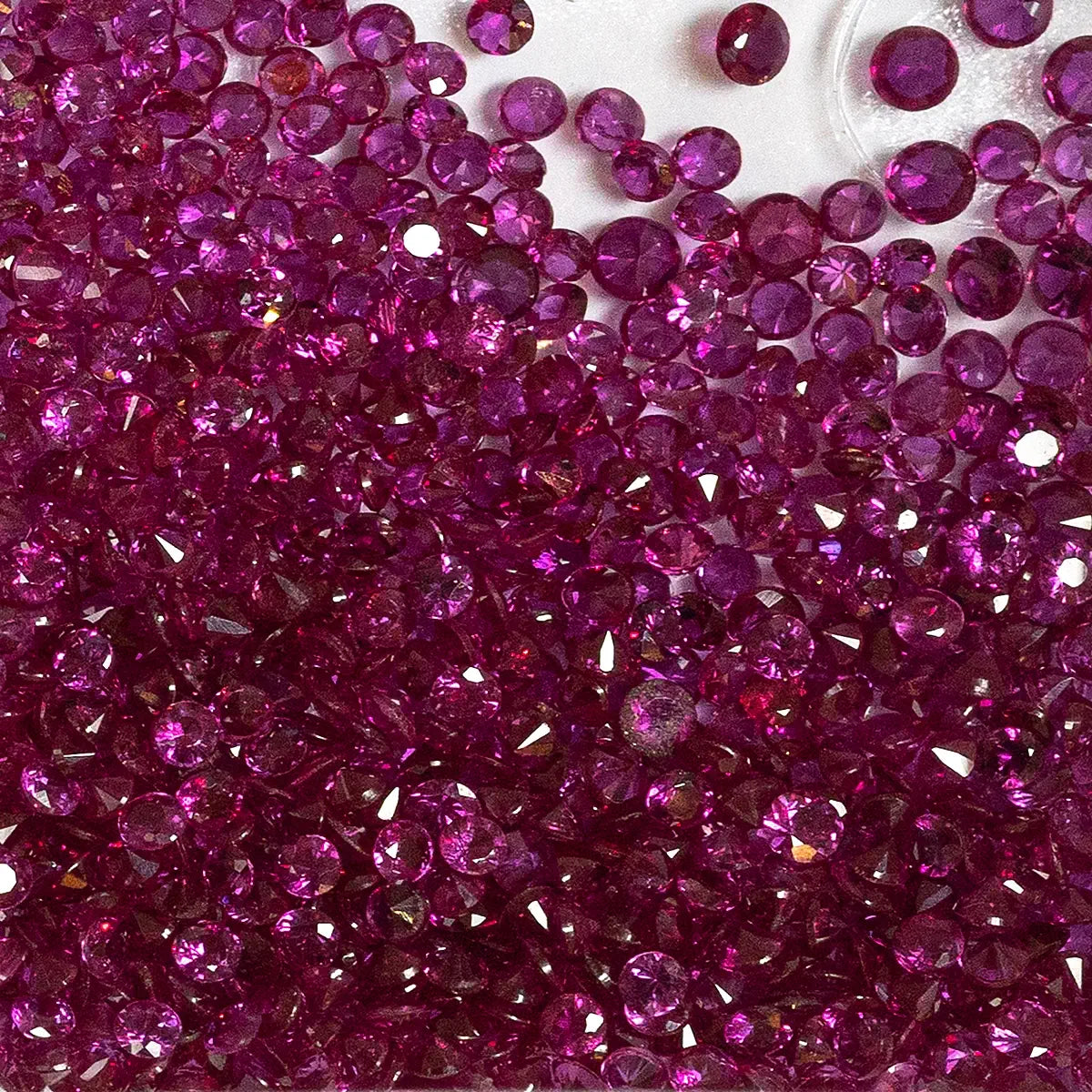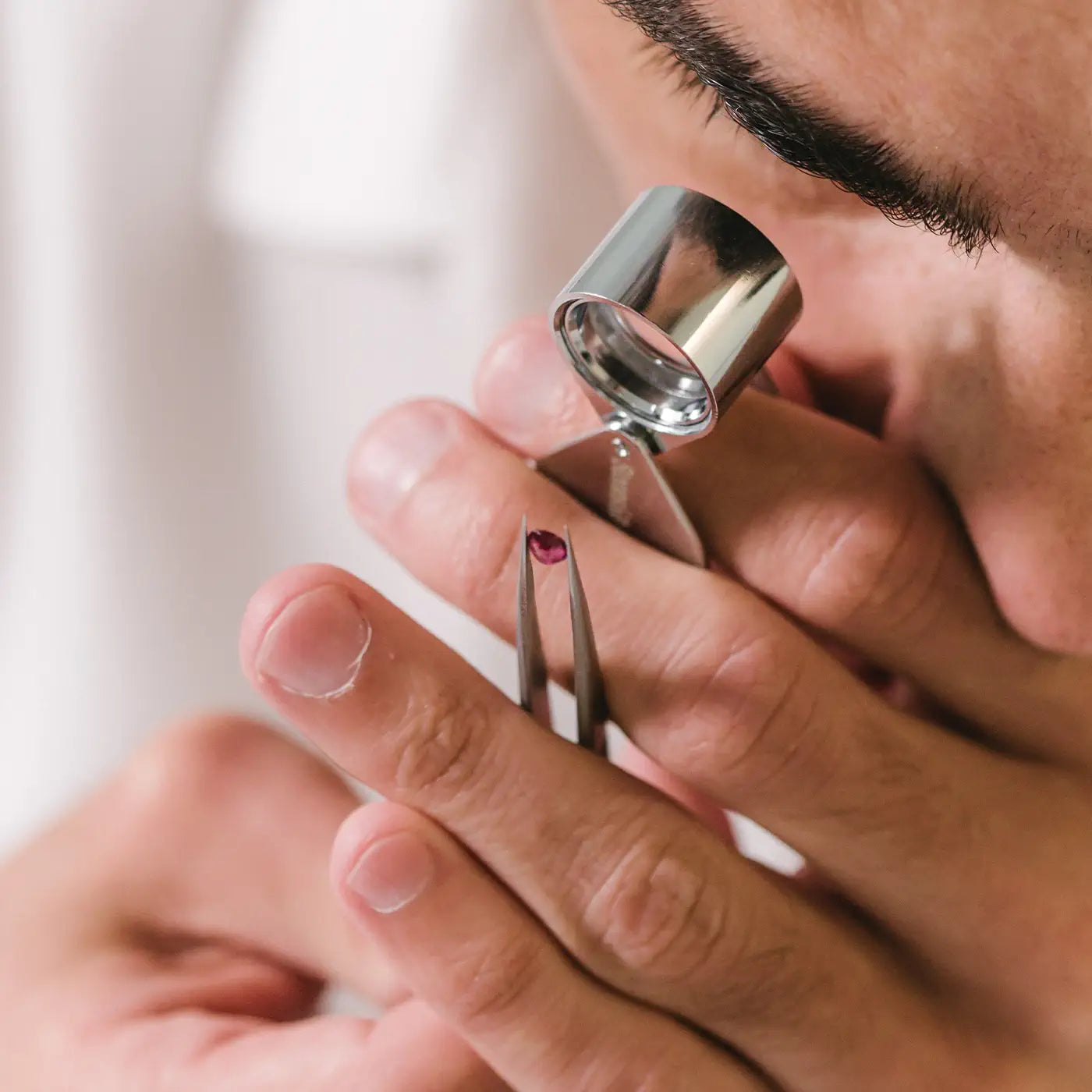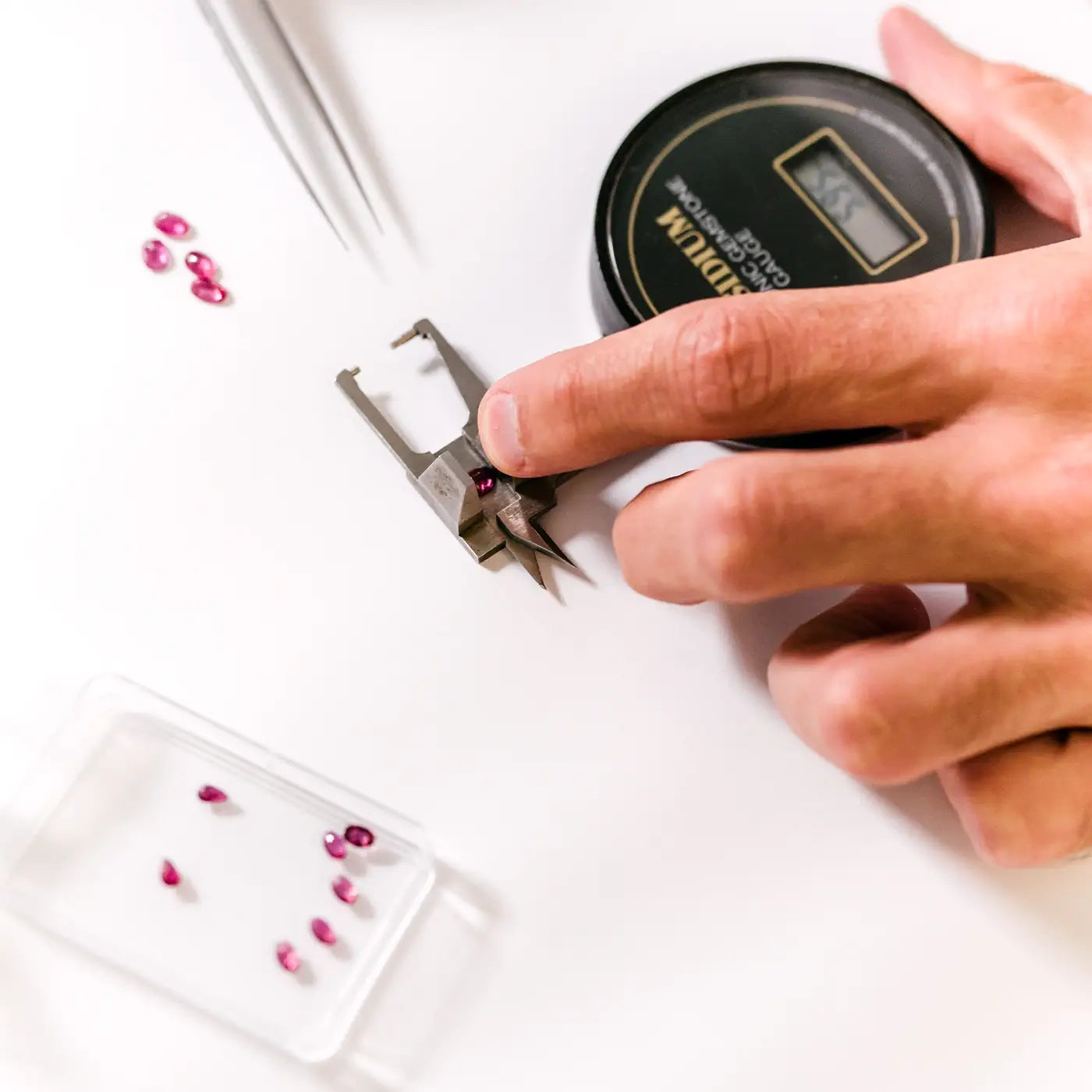Understanding Rubies
Rubies have long been valued for their rich red color and lasting beauty. Their bold hue makes them a standout choice for fine jewelry — especially in bracelets, where color consistency and vibrancy are key. Whether you're selecting a classic ruby tennis bracelet or a modern design, knowing how rubies are evaluated will help you make an informed purchase.

The Key Factors in Evaluating Rubies
While rubies don’t follow an official "4Cs" system like diamonds, they are still assessed based on four main characteristics: Color, Clarity, Cut, and Carat Weight — with color being the most important.
Color
Color is the most critical factor in a ruby’s value. The finest rubies display a vivid, saturated red, often described as “pigeon’s blood red” — a bright, pure red with a slight blue undertone.
Rubies can vary in tone and saturation:
Pinkish-red
Lighter, softer in appearance.
True red
Strong, vibrant red — the most sought-after.
Purplish or brownish red
Less desirable due to cooler or duller tones.

Clarity
Rubies commonly contain natural inclusions. Completely clean rubies are extremely rare.
- Eye-clean rubies (no visible inclusions without magnification) are more valuable.
- Visible inclusions, especially those that are dark or reach the surface, can reduce both appearance and durability.
In bracelets, where stones are smaller and closely set, clarity should be high enough that no inclusions are visible to the naked eye and transparency remains good across the piece.

Cut
Cut refers to how well a ruby is shaped and polished. While rubies are not graded for cut in the same way as diamonds, quality cutting affects their sparkle, color presentation, and overall symmetry.
Well-cut rubies should:
- Reflect light evenly
- Display consistent color across the surface
- Fit neatly into the bracelet setting without gaps or mismatched proportions
Common shapes for rubies in bracelets include oval, round, cushion, and emerald cuts.
Carat Weight
Carat measures the weight of a ruby. Due to their density, rubies often look smaller than diamonds of the same carat weight.
In bracelets, the total carat weight (ctw) refers to the combined weight of all rubies in the piece.
- Larger individual rubies are rare, and prices increase significantly with size.
- For bracelets, matched smaller rubies are often preferred for their uniformity and comfort.
Origin
The origin of a ruby can significantly influence its value. Certain sources are known for producing rubies with superior color and quality:
- Myanmar (Burma): Famous for the most valuable rubies, especially those with “pigeon’s blood” color.
- Mozambique: A major modern source producing high-quality rubies with strong color and clarity.
- Thailand, Vietnam, Sri Lanka: Known for rubies with more varied tones and inclusion types.
Ruby origin is sometimes determined through lab analysis and may be noted on a certificate for larger or high-value stones.
Certification
Gemstone certificates for rubies are typically reserved for larger or high-value stones, as certification can be costly. Ruby bracelets — which often include many small stones — are commonly sold without individual certificates.
For premium pieces, certificates from labs such as GIA, Gübelin, SSEF, or GRS can confirm the ruby’s origin, natural authenticity, and any treatments applied.

Final Thoughts
When selecting a ruby bracelet, focus on the color, clarity, cut quality, and how well the stones are matched across the piece. Ask about treatments and, for more expensive items, whether origin or certification is available.
Understanding these factors will help you choose a bracelet that’s visually striking, well-made, and holds long-term value.